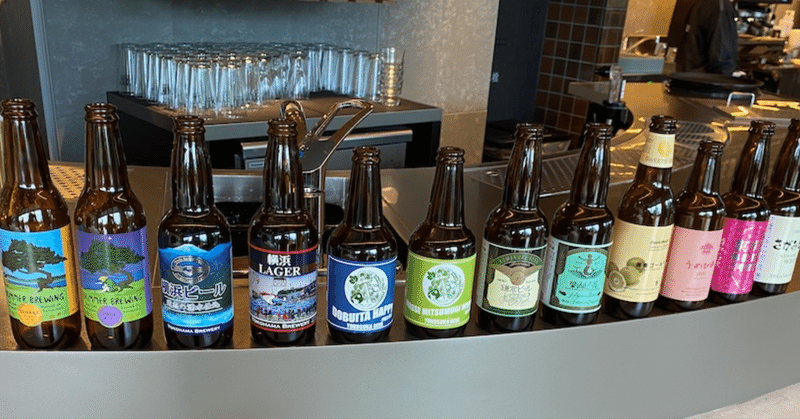
The Beer in Japan (2)
The trend of Craftbeer in Japan
For a long time, the beer market in Japan was under Kirin, Sapporo, Suntory, and Asahi. Though there was no evidence of forming a cartel, the consumers have been frustrated with the fixed price. Reflecting that, in 1994, the government loosened the regulation of minimal production of beer per year from 2000kL to 60kL. It lowered the barrier to entry into the brewing business, and many microbreweries, jibiiru (literally means "local beer"), started their business (Alexander, Indigenous Brews: Innovation, Entrepreneurship, and Beer’s Continuing Evolution since the 1970s, 2013). However, most of these microbreweries failed their business. The brewing quality was not satisfactory, and consumers recognized "jibiiru" as a souvenir product with low quality. Against this disadvantage, a few breweries challenged to improve their quality, learn from craft beer breweries internationally, finally become popular, such as Hitachino nest, Echigo, and Coedo.
After the economic crash in the 2000s, the consumer's preference for beer became more comprehensive, from high-end beer to the beer-like sparkling beverage, called "the third beer" due to liquor tax regulation. High-end domestic craft beer becomes gradually popular through lively beer bars and beer festivals such as Keyaki Beer Festival in Saitama since 2009. Finally, more than 500 of craft beer microbreweries exist in Japan in 2021.
Pushing factor by taxation framework
Another positive factor for craft beer is the new taxation framework "homeland taxation ("furusato nozei") from 2008 (Ministry of Internal Affairs and Communications, 2021). This promotion pushed the awareness of local products, and local craft beer was not an exception. In Furusato Nozei, the investor can get the local products as a reward with tax-exempt. The exempt part of taxation directly swings from the local government of residence. In this framework, the more attractive local products, the more investor would apply this framework. It is a huge chance to increase their revenue for the local government, which has less population and disadvantage of tax revenue. Furthermore, the exemption and rewards are handsome for consumers. People enthusiastically try to invest through this Furusato Nozei. Craft beer can be a popular reward because it is exceptional for that local government and easy to keep. It also worked as a promotion of craft beer itself. The exact amount of rewards request on craft beer is not published yet, but 99 packages including craft beer as their reward are recognized on Furusato Nozei shopping site with the word “jibiiru” (TRUST BANK, 2021). Showing up these breweries on the browsing list would work for specific advertisements. Therefore, the attention toward craft beer in Japan occupies some part of beer-drinking culture today.
Post-Pandemic trends of Craftbeer
In Japan, Tokyo, Osaka, and other few big cities decided to prohibit alcoholic beverage at the restaurant as a part of their third State of Emergency, which negatively impacted their income (Cabinet Secretariat of the Japanese Government, 2021). A minimal amount of governmental financial support but is not enough at all. The brewery enhances its promotion strategy shifting to household consumption.
In fact, the consumption at home is dramatically increased. According to the research by Kirin Co.Ltd, the number of sales shows 10% of increasing in each year since 2017, moreover, this 2021 year showed 200% of increasing compare to the same month of 2020. Though it is just 1% of the entire consumption of beer in Japan, some beer maker predict more increase in the market, at least up to 3%. This trend is accompanied with the world trend of increasing the consumption of craftbeer, which is reported by REPORT OCEAN
(https://prtimes.jp/main/html/rd/p/000002534.000067400.html)
as increasing more than 8.7% by 2027.
Unfortunately, there is a limit to the amount of beer that can be consumed at home, and even with the rise of craft beer, it's not enough to cover the overall beer consumption itself. The beer industy is faced on the shrinking of the market. After the consumers leave from the drinking habit at the restaurant/bar for a while, they seriously need to rebuild the food/drink culture, which seems complicated for a while.
この記事が気に入ったらサポートをしてみませんか?
